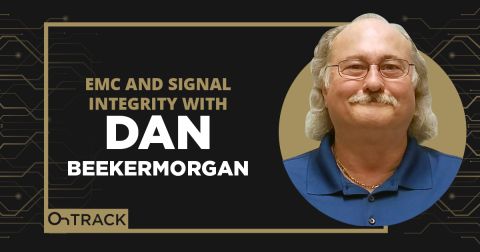How to Conquer Data Package Problems
Today we meet with Rob Cooke, Director of Engineering, and Jose Cordero, Lead CAM Engineer from Calumet Electronics Corporation in Michigan. We talk about something that’s often overlooked, which is making sure your data package references the most current revision of IPC Standards. Listen in as we discuss slash-sheets, ENIG, and Via Plugging.
Listen to the Podcast:
Download this episode (right click and save)
Watch the video:

Show Highlights:
- Jose jokes that nobody goes to college to end up in PCB fabrication. His background is in Art and Sound Design specifically. After completing his studies at Michigan Technical University he found Calumet Electronics, and the rest is history.
- Rob has been in the industry for almost 18 years, mostly doing design work in electronics for aircraft and military systems. He was appointed as the Director of Engineering at Calumet three months ago.
- From humble beginnings, Calumet Electronics has expanded to the point where today they produce between 600 and 800 panels a day, and over 3 million parts per year.
- The facility is unique in that it’s housed in a railway roundhouse - a very unique setting for a circuit board manufacturing factory.
- What are some of the things that slow down production due to insufficient data packages? A lot of confusion about IPC Material callouts.
- In 2017 there was a major update to IPC 4101 that changed the nominations of what materials are grouped under which category and materials are still being called out with the old specs.
- Designers need to pay more attention to their fabrication notes, and not reuse the same material callouts from previous designs. New spec updates are frequently missed, particularly in medical, aerospace and military parts where the design was produced five to ten years ago.
- Why are designers not aware of the update to IPC 4101? The pace of change can accelerate the development of the spec, and when IPC does make changes, it may not always be communicated well enough to end users.
- Via types: IPC 4761 describes seven primary types; some of the main ones are used interchangeably, even when that’s not the intent.
- Two main via types are type 5 and type 7 obviously selecting the correct type will influence both turnaround time and total board cost.
- Some folks try to specify some level of filled or capped via not using a spec but coming up with their own design notes.
- Things that throw us off: Materials instead of a class of materials are specified - there are many epoxies available. When a specific material is called for it could lead to extended wait times.
- We encourage defining plugged or capped vias by spec - the notes are ambiguous, vague, and cause the most problems.
- ENIG changes: There was a change in the spec this year. More gold is not better - the 4552 standard now has a maximum limit for gold, to prevent corrosion - whereas before there was only a minimum level.
- What is hyper corrosion and why it’s a problem: the gold is deposited on the nickel through a replacement process where each atom of gold replaces an atom of nickel - the more gold we add, the more nickel is removed, creating phosphorous molecules which is not a solderable surface.
- Designers need to verify on their drawings that specs haven’t changed.
- Ultimately the data pack is a way of communication between the designer and fabricator and it should be crystal clear. It’s also a critical point of reference for inspections.
Links and Resources:
Calumet Electronics Corporation
IPC Standards: IPC 4101 and 476, 4552
Trade In Your Outdated PCB Design Tool & Unlock 45% OFF Altium Designer today!
Related Resources
Thank you, you are now subscribed to updates.










 Back
Back